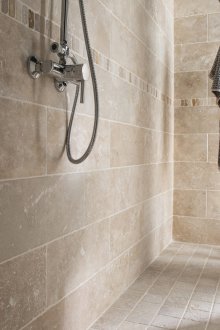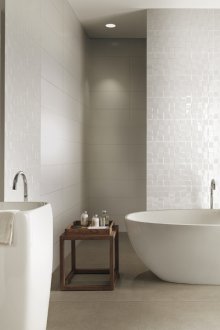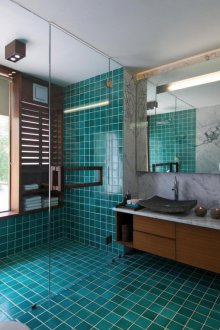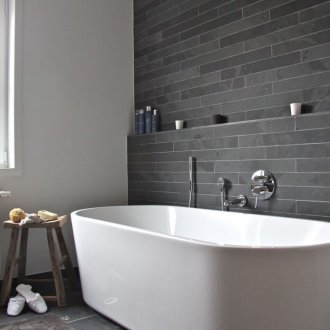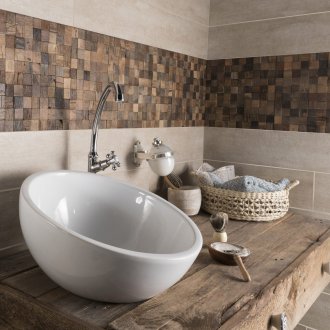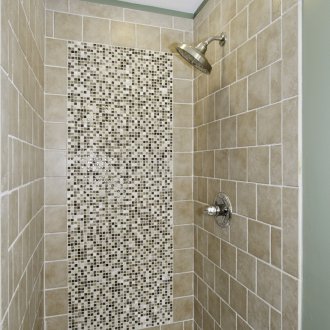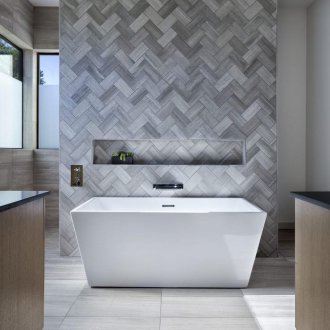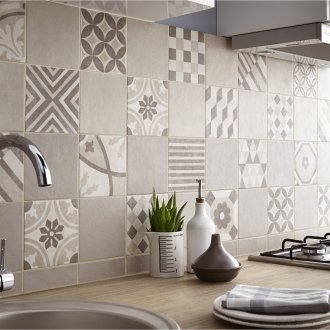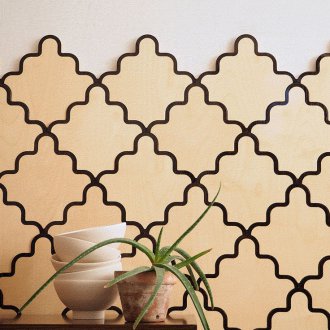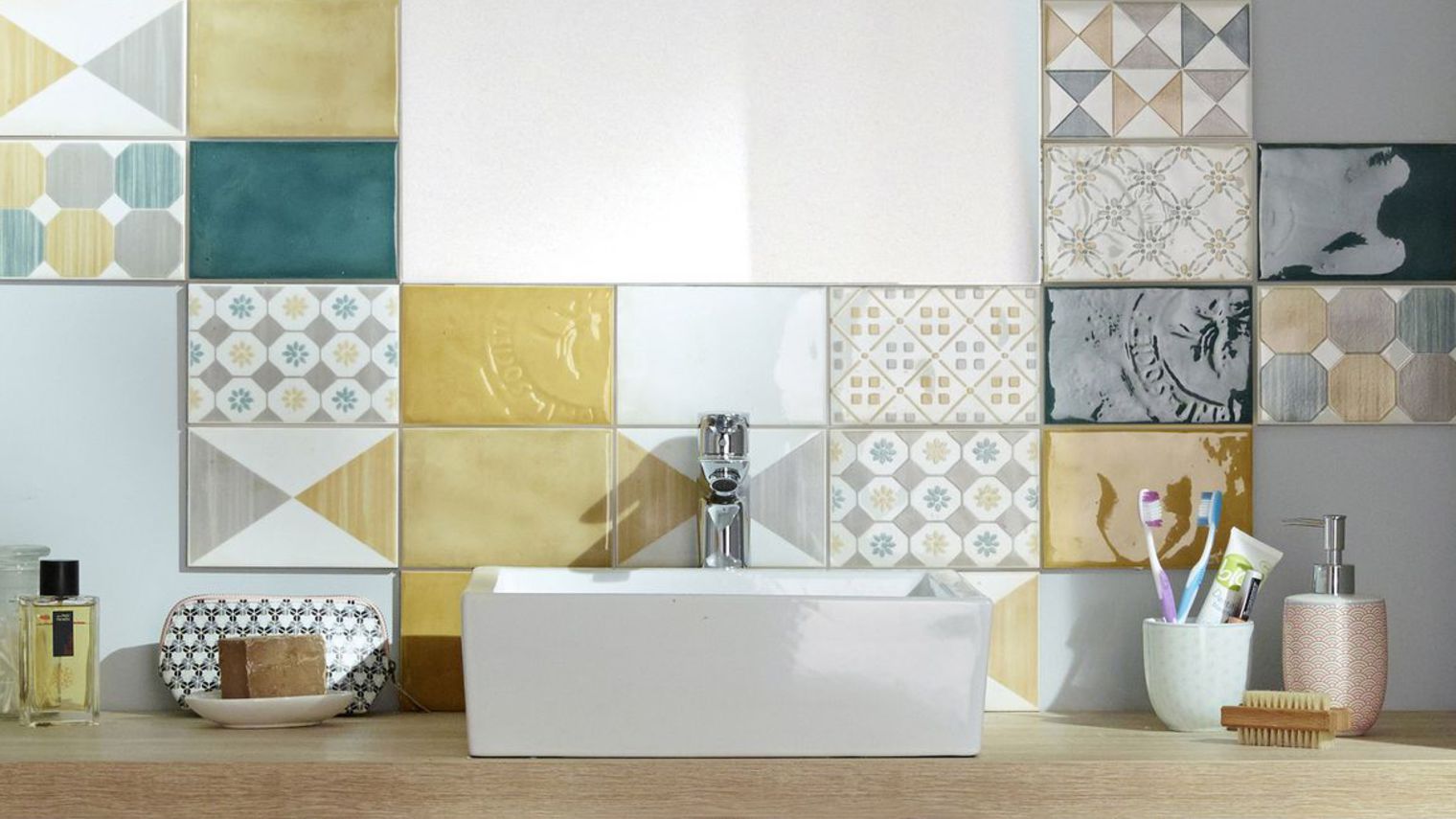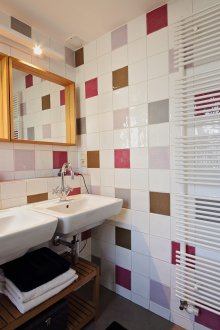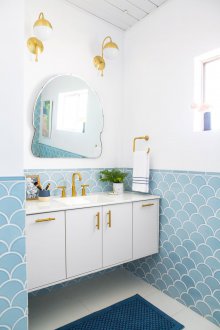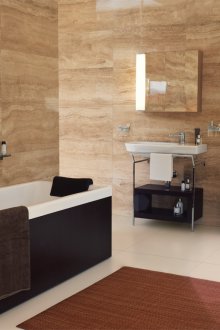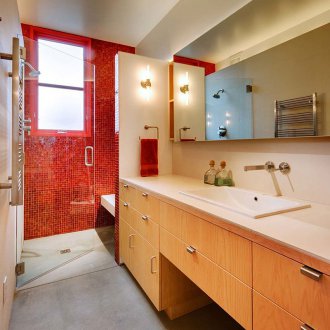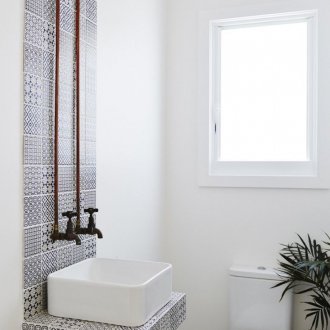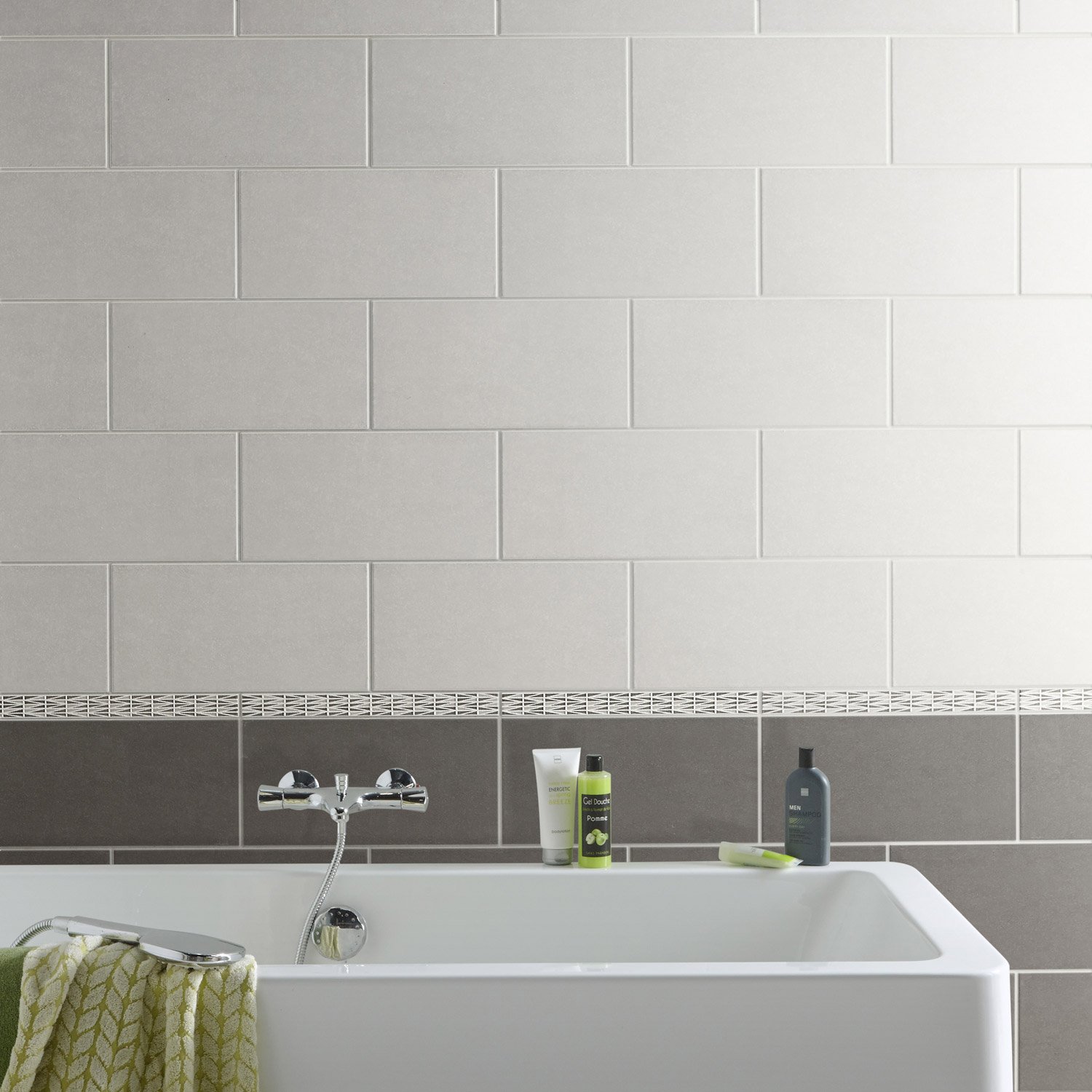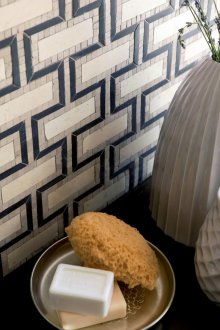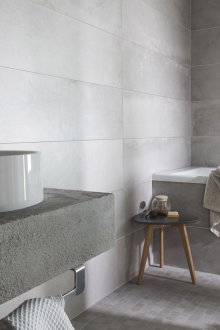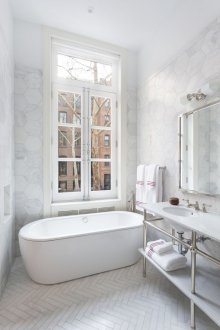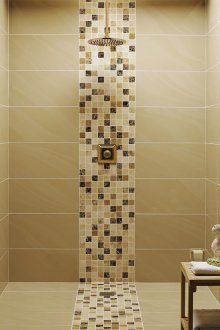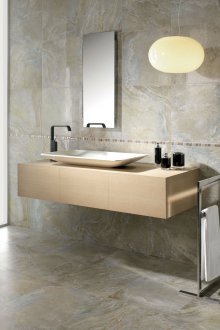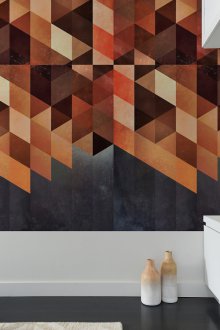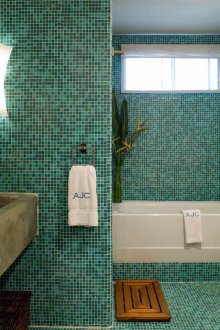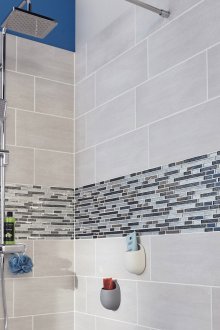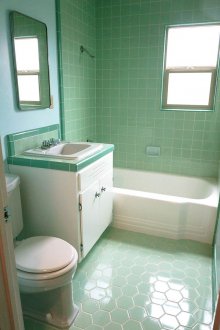Everything about wall tiles: timeless material for any location (25 photos)
Content
Tile is considered to be a universal finish option in virtually any location and in any room. Wall tiles for the bathroom is the most practical way to ennoble the room. In the kitchen, such material will allow you to equip a good working area, convenient to use.
Hallway wall tiles will be appropriate in a home where surfaces get dirty at record speeds. The list of possible options and characteristics of the material can be continued indefinitely.
Wall and floor tiles
In fact, all types of finishing materials can be divided into two groups: for the improvement of the floor and for wall decoration. It is important to understand what their fundamental difference from each other is. Floor tiles are able to withstand heavy loads, both in terms of weight and in the form of mechanical damage. In this case, the characteristics of the finishing canvas, as well as its basic quality, are especially important.
Wall tiles in this sense are more fragile and delicate. Considering the characteristics from this position, we can say that wall tiles can not be laid on the floor. But floor materials can, in principle, be used on walls. It all depends on the design features, the weight of the tile itself, the specifics of the installation of each particular type of materials and a number of other nuances.
Ceramic tile
Ceramic wall tile (tile) is the most common tile, often used for a bathroom, a bathroom and a kitchen. As a rule, the material is presented in the form of rectangular plates of baked clay. Wall decoration can be quite minimalistic, but often masters try to mosaic the wall tiles.
For the manufacture of ceramics of this type several methods are used at once:
- Casting. The clay mass is poured into special “clichés” and fired. Production is the oldest and most expensive. Elements are obtained with uneven edges, and the sizes of one batch sometimes differ significantly. Casting today is used only in small factories or individual small factories;
- Cutting. Sawing is carried out on expensive equipment. Large canvases of travertine or sandstone are cut. With a small output of tiles, the production method is considered even more expensive and costly;
- Extruding. The clay mass is pulled on a special machine, followed by cutting into equal fragments;
- Pressing. The most popular and cost effective way. Using bicotura or monocotra techniques, the material is pressed in this way. So that in the end, strong and aesthetically perfect elements are formed.
Finished elements are coated with glaze, which gives the finished tile a special attractive gloss. Glazed finish looks impressive and stylish. Decorative tiles can be of any colors and shades, as well as be decorated with the most intricate ornaments or patterns.
Ceramic granite
The term "porcelain stoneware" refers to a group of ceramic materials that are characterized by ultra-low water absorption. Such materials have ultra-high frost resistance.
The raw materials from which the tiles are made are close in composition to the raw materials for porcelain production. In appearance, porcelain tile resembles stone. Production involves dry pressing with single firing at a record high temperature.
Unglazed Tile
Unglazed tiles are distinguished by a special granular granular texture, which is visible throughout the depth of the tile. Matte wall tiles look like a canvas made of natural stone, but devoid of various inclusions. In addition, this material is not prone to cracking.
Unglazed porcelain stoneware can be of the following types:
- Unpolished;
- Semi-polished;
- Polished;
- Raised.
It is wall-mounted relief tiles that look especially atmospheric, making it possible to design walls “like natural stone”. It is worth saying that the polishing process slightly increases the final cost of products.
Glazed Analogs
Glazed tiles look especially "elegant". The use of glaze at the final stages of production does not reduce the flawless characteristics of this finishing material. However, "stone tiles" are more diverse in terms of design.
With the help of glaze it is possible to get an interesting color or a bold natural texture. This is multi-color marble, and tile with a pattern, and the popular "white brick", and even imitation of wood.
Scope of application
Given the unique resistance to low temperatures and mechanical damage, porcelain stoneware is widely used as a floor finish. However, wall decor with ceramic granite is created just as often.
Embossed tiles formed by small "bricks" are widely used to decorate the outer surface of walls. Tile "boar" or wall relief composition will be appropriate on insulated balconies and loggias. An important condition: the design must be strong and reliable.
Wall tiles for the kitchen, which is used only in the summer, as well as for decorating the outbuildings and the so-called “cold” rooms, are an ideal solution. In addition, artificial marble, as well as elements that imitate stone, can be laid in a small amount as the main interior accents on the wall in the bedroom, hallway, living room or corridor.
Almighty pottery and its worthy rivals
Laying wall tiles is a real art. Exactly on which layout is selected, how accurately and accurately the work is done, the appearance of the canvas, as well as the performance and life of the finish, depend.
It is even more difficult to choose a tile to complement one or another design concept. The species and stylistic variety of materials is more likely to confuse a potential buyer, rather than allow you to quickly decide on a purchase, and there really is something to choose from:
- Cream delicate marble - pastel or white wall tiles look great in the bathroom, in the kitchen, in the complex interior compositions of large and spacious living rooms;
- Brown wall tiles under the tree will accentuate the excellence of the chalet and country styles, make the “classics” more respectable, and give the interior an eco-friendly touch with a special touch of modernity;
- Mosaic tiles have a particularly sophisticated decor and unusual stylistic solutions. Whatever the layout, this type of finish always looks especially luxurious in the bathroom and in the kitchen. Glossy wall tiles with spectacular mosaics complement the expensive interiors of hammams and saunas.
Especially popular is stone tile (both traditional brown and pastel, and bright unusual colors).She will fit well into the interior of the living room or hall with a fireplace.
A special solution for fans of new products
It is worth mentioning that traditional tiles of the type “tile” or “porcelain” gradually replaced by more advanced types of finishes. This is a plastic pvc composition, as well as gypsum tile. The characteristics of such finishing materials are very specific.
Plastic tiles and gypsum elements are not used for finishing walls exposed to heat. This is a “failing” option for a kitchen or fireplace. However, plastic embossed tiles will create an interesting composition in the style of loft, modern or art deco in the hallway, corridor, living room.
Always win-win tiling techniques
Green wall tiles add a touch of freshness and naturalness to the interior of the room. The blue, turquoise, sky-blue palette possess such talents.
Black wall tiles are used in expensive modern interiors. You can use only a few tiles in order to make an expressive effect on a light canvas. Always a win-win combination - a white glossy base and a richly brown, almost black bar with chocolate tints. Another pertinent option is a cream matte background and black marble as a minimalist accent.
Experts advise combining expensive tiles and cheaper finishes. This technique will allow you to save money and create excellent exclusive interior due to unusual combinations. For example, a very cheap gypsum boar tile will “make friends” with more expensive sandstone, provided that the gypsum elements will imitate the natural material in texture and color.
Real marble can be supplemented with quite budget (if compared with the cost of real natural stone) granite. Tile “stone-like” or “wood-like” can be completely inexpensive, just remember the same plastic.
However, in this case, you need to be extremely cautious, thinking through the nuances with lighting and the integrity of the interior composition in principle. For example, a creamy background, dark tiles, gray furniture in small and poorly lit rooms will create an oppressive impression. In sunny rooms, such a combination would be more appropriate.
How to work with tiles?
Basically, we put the tiles according to the standard scheme, when each next element is equalized at the seams with the previous one. Ultimately, perfectly equal strips of finishing material should be obtained. From the correctly laid tiles, the final impression of the interior of each room depends. Any defect, uneven seam, deformation, chips will attract the eye.
For fans of unusual solutions, wizards usually immediately offer various ways of arranging the selected tile. The main rule, compliance with which will allow you to demonstrate excellent taste: the more complex the design of the tile, the simpler the layout should be.
But simple monochrome details can be combined in a wide variety of ways. An interesting effect is obtained precisely due to the appearance of an interesting “spider line” of seams. Thus, often used “quiet” tiles for the corridor or more recent colors for the bathroom.
When buying finishing material, special attention should be paid to the quality of the product, carefully studying its characteristics. Having chosen the appropriate elements and having thought over the scheme of their placement on the wall, it is worth making sure that the installation is carried out by a truly experienced specialist.
During operation, all recommendations regarding proper surface care must be followed. This will allow you to enjoy a spectacular finish for a really long time.
